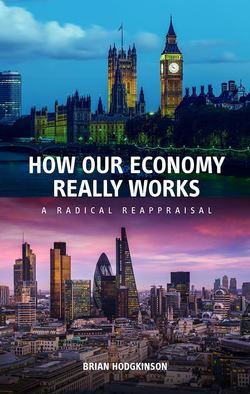Читать книгу How our economy really works - Brian Hodgkinson - Страница 9
На сайте Литреса книга снята с продажи.
1 Introduction
ОглавлениеECONOMISTS HAVE long asserted that three factors of production lie at the root of their subject: land, labour and capital. Yet in the development of the subject into theories and practical applications there has been a thorough-going analysis of labour and capital and a grievous omission of the factor of land. This is reflected in the minimal place it holds in modern text books, in popular discussion and in political debate. Indeed much of the argument about major issues, like industrial production, the distribution of income and wealth and government policy, reverts to a polarised struggle between two antagonists, labour and capital. The third factor, land, hides in the background, unacknowledged yet exerting a fundamental influence upon the outcome of the whole economic process. This book hopes to present many examples of this neglected significance of land in the economy, but one obvious example may help to clarify the point initially. The price of houses has risen continuously at a rate well in excess of the rate of inflation, causing difficulties for new buyers, creating serious problems in the mortgage market, and profoundly changing the distribution of wealth between generations and between regions. Yet what is called the ‘house price’ is really a combination of land price and building price. These two prices operate quite differently and require quite different approaches by policymakers. More will be said about this one example and the impact of the error upon the economy.
Why has this lacuna in economic thinking come about? There are three reasons that have a bearing upon one another. Firstly, the land enclosure movement in Britain took place over a long period, reaching its peak in the early nineteenth century, by which time little land was left for public use and access. Private claims on land, particularly those of the major enclosing landlords, but also of all others who came to regard a piece of land as absolutely ‘mine’, developed vested interests. They preferred to ignore the older tradition of land as communal property to be used by individuals under conditions that took account of the interests of others. This absolute claim on land now extends to large commercial companies, including foreign ones, and crucially to the ownership of urban land, in which over fifty percent of the population now have a vested interest.
Secondly, economic thought developed on lines that seemed to justify the growth of such vested interests, whilst theoretical reasons appeared to support the omission of land from most of the analysis. It was no coincidence that as the private enclosure of land grew, alongside it grew a theory of supply and demand that only employs the concepts of labour and capital, and later a theory of macro-economics that treats the whole economy as producing and consuming in a landless environment. When land gets mentioned at all, it is usually treated as capital. The consequence of this egregious sleight of hand will be examined.
The third reason for the omission of land from economic thought is that as urbanisation developed, following land enclosure, the general awareness of the presence of land became gradually attenuated. How often do people in cities realise that they are living on land? Houses, factories, offices, shops, pavements, and indeed all the built environment, seem to establish a kind of screen between people and land. When a building is pulled down, or a road dug up, the screen is broken. Bare mud or rock provides a glimpse of the earth that lies ubiquitously but unseen beneath our feet. One result is that the term ‘land’ becomes associated almost exclusively with the countryside, where a minority of the population live or work. The ‘land question’ that so disturbed our ancestors, when it occasionally arises, is usually in the form of debates about farming tenancies or pollution of agricultural land. The city dweller is not concerned. Yet that same city dweller spends hundreds of thousands of pounds on a house, with at least half the price consisting of the land price. Similarly the worth of a retail business may be largely determined by whether it has a freehold on the land it occupies. Urbanisation makes land invisible. Only a few shrewd businessmen realise its worth, and make fortunes from trading in it.
Despite this general neglect of the factor of land, economists have usually retained a concept of land that refers not just to the dry surface of the earth, but also to the natural features attached to that surface or to the subsoil. In particular, these include natural vegetation, like forests, and minerals such as metals, coal and oil. Only when these materials are extracted by human labour are they described as wealth, production or capital. This original notion of land is a firm basis on which to examine how it operates as a factor of production. An example of this, which anticipates the following discussion of rent of land, is that the value derived from the use of land by exploiting such materials can be correctly classified as rent and not as a return on capital.
Following the founders of the subject of Economics, notably Adam Smith and David Ricardo, we may then continue to take as the starting point of any economic analysis the three concepts of land, labour and capital. Land has already been defined. Labour can be defined as the application of human effort of body and mind to the production of wealth and services, where wealth means actual physical production, excluding claims on it such as money and securities. Capital means wealth used in the production of further wealth. Retaining this threefold foundation throughout any economic discussion yields conclusions far different from the conventional ones.
